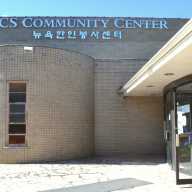Did you know there’s a condition affecting eight million Americans that could be increasing your risk of cardiovascular disease? Neither did Phylicia Rashad. But when the beloved TV mom from “The Cosby Show” lost eight close family members to heart attack or stroke it was cause for concern that perhaps there was some connection.
At the time, Rashad had never heard of Peripheral Artery Disease (PAD), a chronic condition that can lead to serious cardiovascular events when the arteries that carry blood to the legs become narrowed or clogged due to the formation of plaque, interfering with normal blood flow. PAD more than doubles the risk of heart attack or stroke and puts sufferers at more than four times the risk of dying from heart disease.
“I read about the condition, what it is and the groups that constitute the greatest risk category,” says Rashad, “then I reflected on my family members who had risk factors for PAD and were never tested,” she continued. “I realized that like my own family, millions of people are not aware of PAD and the risks associated with it.”
Many people over 50 have the potential for developing PAD if they have at least one of the common risk factors, including those with high blood pressure, high cholesterol or diabetes. Others in this age group at risk are smokers and former smokers and those with a family history of heart attack or stroke. Everyone over 70 is also at risk.
“The diagnosis is easy,” says Rashad, explaining the simple and painless procedure she recently had in her doctor’s office. “It’s like having your blood pressure taken.”
The practical method used is the ankle-brachial index (ABI), which is both an effective and accurate means of detecting PAD. Blood pressure in ankles and arms is measured then calculated by dividing the ankle pressure by the arm pressure to arrive at the ABI score. Depending on the score, other tests may be recommended.
Unfortunately, says the actress, in most cases you have to ask your doctor to test you because of issues related to time and staffing. However, she points out that blood pressure monitoring didn’t become routine until the 1960s, and that it’s only a matter of time before people become aware of PAD and start asking for the test to prevent heart attack and stroke.
To that end, Rashad has taken on a new role to raise awareness of Peripheral Artery Disease. Together with Bristol-Myers Squibb/Sanofi Pharmaceuticals Partnership and in collaboration with the PAD Coalition, she has helped launch PAD: Make the Connection: Know Your Risks from Legs to Heart to Brain. The public action campaign is aimed at educating people about the risk factors for PAD, helping them identify if they or a loved one are at risk, and motivating those at risk to speak with their doctors about getting tested.
“I’m not trying to tell people what to do,” says Rashad. “I just want them to know about PAD.” The Tony Award-winning actress kicked off the campaign by speaking to Congressional leaders about the need for increased screening so patients who are diagnosed can discuss treatment options and lifestyle changes to reduce the risks associated with the disease with their doctors. She is also bringing the message to people across the country through a series of events. And, she is urging people to get more information about PAD diagnosis, management and treatments by visiting www.PADFacts.org.
“It just made sense for me to be tested,” says the screen and stage legend. ”My father and grandparents probably had PAD, but at the time it wasn’t being diagnosed so I can only wonder if PAD had something to do with it. Now other people don’t have to wonder.”
PAD Facts
PAD Symptoms
unaware of PAD
likely to die from cardiovascular disease
within ten years than those without PAD
reduced through early diagnosis,
lifestyle changes and appropriate
medication.
being treated to help prevent
life-threatening heart attacks and strokes
that are associated with the disease.
PAD is a silent disease.
Some patients experience pain or discomfort in the buttocks, thighs or calves, symptoms typically seen when the disease has progressed. However, patients often don’t know they have PAD because they don’t experience symptoms.
About one in three patients with PAD actually feels pain or heaviness in the feet that goes away with rest. By that time, their arteries may be so clogged or hardened that they are not getting enough oxygen to supply their leg muscles.
Others ignore their symptoms because they believe them to be a natural part of aging.
































